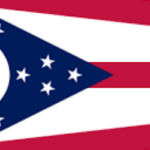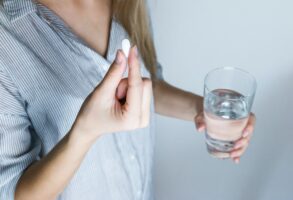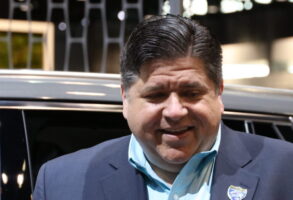
Published November 5, 2016
Last month, during the final presidential debate, Hillary Clinton did the parents of sick and dying children a terrible disservice: “I have met with women who toward the end of their pregnancy, get the worst news one could get, that their health is in jeopardy if they continue to carry to term or that something terrible has happened or just been discovered about the pregnancy,” she said. “I do not think the United States government should be stepping in and making those most personal of decisions.”
Perhaps no other exchange that evening stirred as much passion — not to mention articles, testimonials, and a virtual Facebook and Twitter firestorm — than did Clinton’s defense of late-term abortion and Donald Trump’s subsequent graphic characterization of it.
Women who had undergone late-term abortion procedures immediately took to social media, insisting that their unborn children had not been “ripped from” them, as Trump stated in his exchange with Clinton. And a number of obstetricians specializing in maternal-fetal medicine (the doctors caring for women pregnant with the most vulnerable or sick children) wrote persuasive rebuttals, stating that late-term abortions were simply not the “medical necessity” Clinton claimed they were.
Between the strong voices on either end of these poles, however, is a quiet and thoughtful one that went virtually unheard: that of families who had embraced their dying children, and given life to others, by choosing perinatal hospice and infant-organ donation over abortion.
When Jeannie Wallace French was six months into her pregnancy with twins, a boy and a girl, she was told that her daughter, Mary Bernadette, was not developing “as expected.”
Baby Mary was suffering from an occipital encephalocele, a severe form of spina bifida. At a minimum, she would need immediate brain surgery, likely resulting in the loss of brain matter essential for her normal functioning. Doctors recommended “selective reduction” — a process by which an overdose of digoxin injected into Mary’s heart would cause immediate cardiac arrest and subsequent death. This procedure, French-family physicians counseled, would also help to ensure that Mary’s healthy twin brother would be delivered safely.
At the time, Jeannie French and her husband, Paul, had never heard of perinatal hospice. But the death of an infant in their neighborhood made them aware that there might be a different ending to Mary Bernadette’s life. At the funeral, they learned that the baby boy, Patrick, had died because he was in need of a heart valve. Seventh on a list of waiting infant recipients in the Chicago area, time ran out on him. “The tissue he needed didn’t arrive in time,” French recalled. “Patrick died while waiting for it.”
Suddenly sensitized to the circumstances of losing Patrick, she contacted the Regional Organ Bank of Illinois and explained that she was pregnant with a baby who would likely not live long after birth. She was told that organs from infants who underwent abortion procedures, including the digoxin injection recommended for her daughter, were too “traumatized” to be used for transplants. Moreover, to be registered as an organ donor, an infant donor must reach a minimum size, about six pounds. Jeannie and her husband also learned that most parents who receive a terminal diagnosis for their child are pressured or encouraged to abort and that, as a result, infant organs were often not readily available for critically ill babies who might have survived given a transplant.
While still hoping that Mary would survive and be healed, the Frenches decided to pursue the possibility of organ donation. “We followed all of the medical advice to ensure the very best outcome for our daughter, hoping to keep her alive until she and her twin could be safely delivered,” said French. “This required a regimen of bedrest in a position where her oxygen supply was maximized, along with frequent ultrasound imaging.” At 37 weeks’ gestation, the twins were born via cesarean section.
“In order to be a candidate for life-saving surgery to close the encephalocele, Mary’s vital signs would need to be stable for 24 hours,” French recalled. “But her condition was worse than doctors anticipated and she died six hours later, after being welcomed and held by her parents and grandparents. Her maternal grandmother sang to her in Slovak, telling me the baby ought to know some Slovak if she was going to meet her relatives. Mary’s healthy twin brother has no health issues.” The day of her funeral, a letter arrived with the news that Mary’s heart valves had been a match for two Chicago infants who otherwise would have perished without her gifts.
Why aren’t more parents informed about perinatal hospice and infant-organ donation? According to Colleen Malloy, a neonatologist at Northwestern University’s Lurie Children’s Hospital, “the field has evolved over time as hospice for adults has developed. Unfortunately, perinatal hospice is not always offered to parents who are given a serious prenatal diagnosis.”
Unfortunate, because hospice not only respects the short life of a dying child. It also may be the best way to help a family. Malloy points to a 2015 study in the Journal of Prenatal Diagnosis that followed 267 people whose children had been diagnosed with anencephaly in utero. “Women who terminated their pregnancy had significantly increased reports of despair and depression, especially when compared with women who continued the pregnancy,” Malloy explains. “The study concluded that there appeared to be a psychological benefit to women to continue the pregnancy following a lethal fetal diagnosis. As one parent told me, either path (abortion or choosing to continue the pregnancy) has pain, but in choosing to cherish the precious time she was given with her daughter, Hailey Grace, we have been changed forever.”
Perinatal hospice is a wonderful way to support families. “In my experience, perinatal hospice gives families closure,” Malloy notes. “It’s a time to say goodbye, a chance for the siblings, grandparents, and other relatives to meet, hold, and say goodbye to the baby. Every single family I have worked with in this situation was happy they had chosen the route of perinatal hospice. To me, they seemed at peace, even through a very difficult and tragic life event.” And studies in 2003 and 2006 underscore Malloy’s experience, reporting that 75 to 80 percent of women decide to continue their pregnancies with critically ill children when perinatal hospice is offered.
Over 150 perinatal hospice programs are operating in the country and another 25 or more internationally. “It gives them options to care for their children, even through the sadness of illness and dying,” Malloy observes.
Given Hillary Clinton’s strong support from Planned Parenthood and the abortion industry, it’s no surprise that she defended late-term abortion. But she did a tremendous disservice particularly to families facing the tragedy of a dying infant. “Some children are born dying,” says Jeannie French. “Providing late-term abortion does not save them. A dying child deserves love and comfort from her family, and parents deserve the peace that comes from providing that love and care. We do not have to kill a dying child.”
— Mary Hallan FioRito is an attorney and the Cardinal Francis George Visiting Fellow at the Ethics and Public Policy Center in Washington, D.C.












